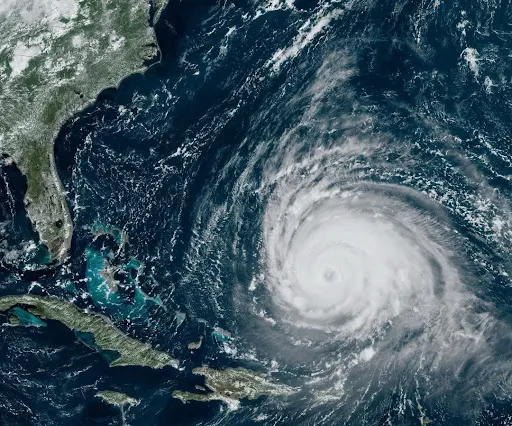June 1 marked the start of hurricane season in the Atlantic Ocean
June 1 marked the start of hurricane season in the Atlantic Ocean. And as Earth’s climate changes, hurricanes are changing too. 🌀
Hurricanes are not becoming more frequent during the official season, which lasts from June 1 to November 30; however, when they do form, hurricanes are more likely to become much stronger (Category 4 or 5) in a warmer world. Tropical cyclones are also becoming slower and wetter.
As oceans warm, hurricanes are more likely to undergo rapid intensification – when wind speeds increase by 35+ mph in 24 hours. Sea level rise is also worsening storm surge from hurricanes, increasing coastal flood risk during storms.
Image description: Satellite image of Hurricane Lee, a large storm with a spiral of puffy white clouds, taken on September 12, 2023. Below is the blue water of the Atlantic Ocean. To the left, the green land of the southeast U.S., Florida, and Cuba are visible.
Batten down the hatches, hurricane season is here! High winds, coastal erosion, storm surge, and flooding can negatively impact communities, ecosystems, and cost communities and the economy billions of dollars. In addition to strong winds and heavy rains, hurricanes can generate hazardous coastal waves and currents that have the power to move large amounts of sand, destroy homes, businesses, schools, roads, bridges, and water and wastewater systems and reshape the Nation’s coastlines.
USGS experts are prepared this season, with improved science, ongoing research, and state-of-the-art technology to face hurricanes head-on. These strategies will provide emergency managers and decision-makers across the nation with the essential information needed to minimize flood risks and safeguard lives and properties for this hurricane season and for years to come.
#Earth #Hurricane #TropicalCyclone #Climate #ClimateChange #NASA #Science




Comments
Post a Comment